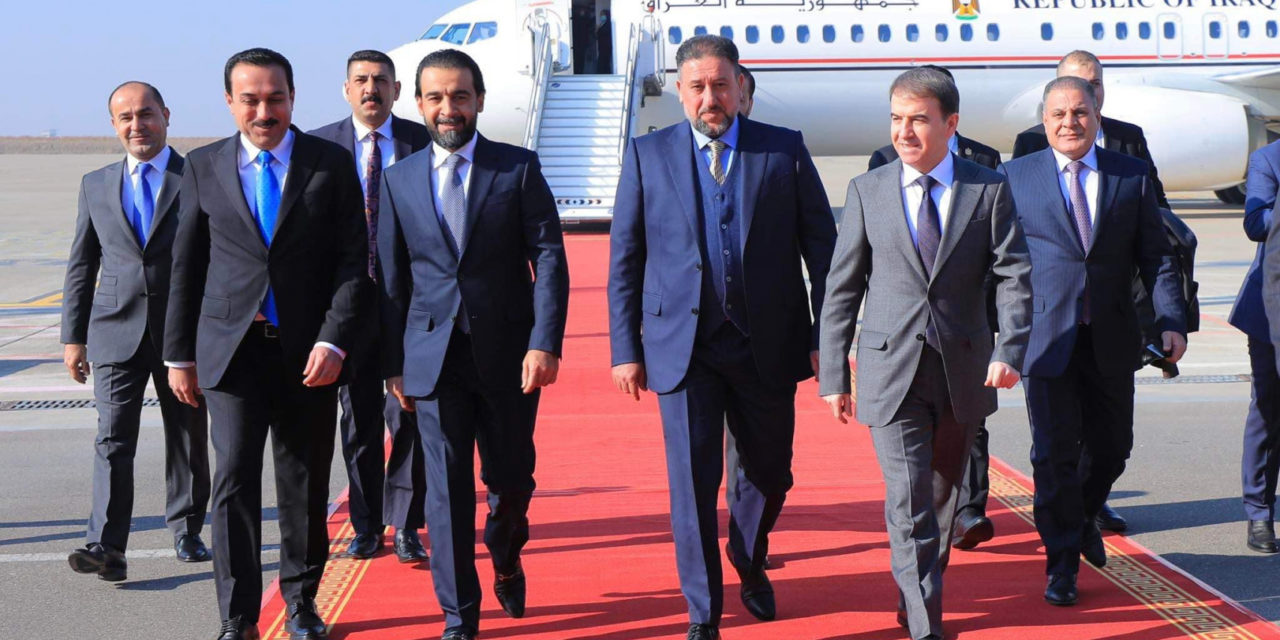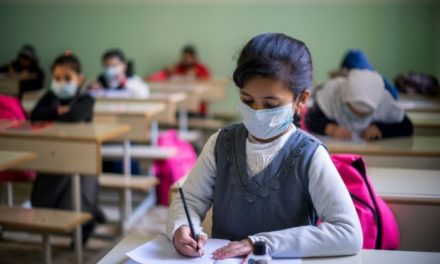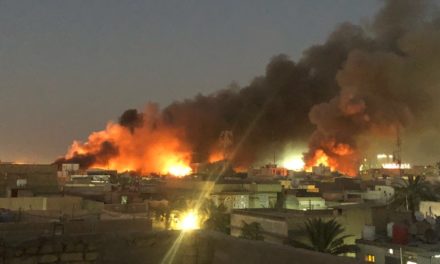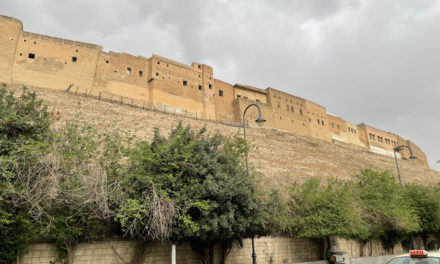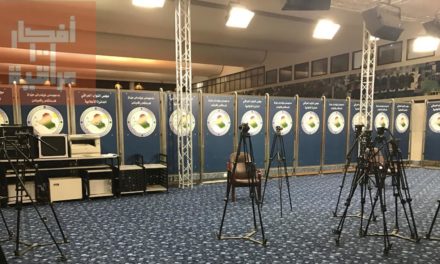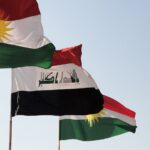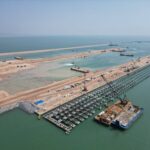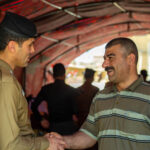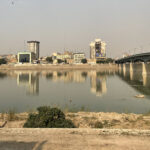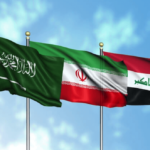(Photo: Shafaq News)
Viewed as a system, Iraq’s political elite networks have demonstrated extraordinary resilience in withstanding two major shocks to their modus operandi of ruling by consensus that shares public authority and resources between them. The extra-elite shock of the Tishreen popular protests of 2019 and calls for radical change against the ruling elite were crippled by a mix of repression, co-optation, and marginal reforms. The intra-elite shock of Muqtada al-Sadr’s recent threat to form a majority government, together with his allies Masoud Barzani and Mohammed al-Halbousi, has been brought to a standstill by the Coordination Framework. Government formation remains stalemated, with the most likely ultimate outcome being a new consensus government. This will allow dysfunctional governance to persist with little prospect of improvement. A rethink of pathways for political reform and renewal is needed.
Much recent political analysis of Iraq has centred on the bid by Messrs. Sadr, Barzani and Halbousi to keep a number of Iraqi political parties and politicians, in particular Nouri al-Maliki, out of the next government. But while the choreography of the associated events has received ample coverage, their relevance to the performance of Iraq’s political system as a whole has not. This analysis seeks to fill the gap by viewing Sadr’s efforts to create a majoritarian government as a shock to the hitherto prevailing practice of governance by elite consensus. It followed in the wake of another shock to Iraq’s political system, namely the 2019 Tishreen protests. What does the resilience of Iraq’s political elite networks to both shocks tell us about the prospect for political renewal and reform in Iraq?
Broad contours of Iraq’s political settlement
To begin with, it is worth emphasising that national-level governance in Iraq over the past decade has been assured by means of big-tent consensus rule, with all key political players obtaining shares of public authority and public resources during protracted government formation processes as well as on a more ongoing basis via politicised and clientelist appointments throughout the state bureaucracy. Public authority and resources are subsequently used in the service of party/personal interests to obtain influence, privileges, and benefits, as well as to maintain clientelist networks, rather than to pursue a shared conception of national development.
Such government-by-consensus keeps all major elite groups broadly content and has arguably reduced intra-elite strife since the late 2000s. However, it comes at the cost of a low and decreasing output of public goods and services. Even though social acceptance of ethno-sectarian identity as a basis for this type of rule has dropped significantly over the years, government continues to be based on such logic. Moreover, with the passage of time, big-tent governments appear to serve fewer Iraqis and to have become more focused on serving the narrower interests of political elites. In other words, elite rule has grown more detached from many of Iraq’s social realities. It is in this context that we must examine the attempt by Sadr and his allies to put a majoritarian government in place.
The elite challenge from within: Sadr aims for majoritarian government
When the Sadrist movement emerged from the 2021 October elections with the highest number of seats, Muqtada al-Sadr and his allies Barzani and Halbousi challenged the Coordination Framework, an informal forum that unites Iraq’s Shia parties, and the Patriotic Union of Kurdistan (PUK) by threatening to form a government excluding these parties or, at a minimum, Maliki’s State of Law that is core component of the Coordination Framework. Such a move would have broken with the practice of big-tent governance in which political elite networks run the Iraqi state as a cooperative. From this perspective, it represented a significant intra-elite shock to the country’s political system.
The trigger for this challenge was the distorted outcome of the October 2021 parliamentary elections that granted Sadr seats in outsized proportion to his share of the popular vote, which was in turn the result of the new electoral law. Due to smart use of the new district system and the single non-transferable vote, 650,000 votes netted Sadr 73 seats, while 670,000 votes netted Fatah only 17 seats (Fatah is another core component of the Coordination Framework). In threatening their exclusion, Sadr effectively mounted a direct threat to a key power base of a number of Iraq’s political elite networks – including those of Maliki (State of Law), Hadi al-Ameri (Fatah) and Qais al-Khaizali (Asaib ahl al-Haq) – as exclusion puts at risk their networks of agents and brokers in senior positions across the civil service, ministries, executive agencies, local authorities (e.g. the municipality of Baghdad) as well as independent commissions and organizations (e.g. the Central Bank) that secure them influence, public jobs, procurement contracts and other privileges. A majority government would have four years to parachute supporters of Sadr, Barzani and Halbousi into such positions to the cost of their competitors’ networks. The marketing argument that a majoritarian government would be more reformist, i.e. would have a greater chance of making reform happen – something that Sadr’s rhetoric underlined a number of times – must, however, be taken with a grain of salt. Prima facie, it is more likely that Sadr, Halbousi and Barzani would continue to divide public authority, jobs, and funds in the ‘traditional’ manner of big-tent consensus government, but between fewer players.
But Sadr and his allies have ignored the fact that the power to rule in Iraq is derived from multiple and diffuse sources, of which electoral results are only one. Other sources include autonomous coercive capabilities and informal networks in the judiciary and security services, but also foreign sponsorship and private sources of revenue (licit and illicit). Given the existential nature of the challenge against them, it is unsurprising that the Coordination Framework took recourse to such alternative sources and means to prevent their exclusion from government. Different factions pursued different strategies, however. While Haider al-Abadi, Ammar al-Hakim and, to some extent, Ameri, initially pursued dialogue with Sadr and then sought recourse to legal means, factions like Asaib ahl al-Haq and Kataib Hezbollah orchestrated political protests and even attempted to storm the Green Zone. The symbolic drone attack on the Prime Minister’s residence gave rise to much speculation, but the ‘who dunnit’ has not been established in an evidence-based manner and only circumstantial evidence suggests Iran-linked resistance factions might have played a role. Similarly, a range of violent incidents against political offices of Sadr’s coalition, such as in Anbar, were not attributed.
In an ultimate bid to realize and/or bloc the appointment of a new president, both the Coordination Framework and Sadrists resorted to a carrot and stick approach to convince (independent) parliamentarians to join their camp. This febrile climate reached a climax in the form of the surprise ruling of the Federal Supreme Court that established a parliamentary supermajority is required to elect Iraq’s president. The ruling primarily showed that the procedures governing the politics of Iraq’s quasi-democracy continue to lack in clarity and predictability. Judicial interpretation of electoral procedures and results has given rise to regular accusations of politicization that are hard to substantiate, but it would be surprising if the longstanding practice of clientelist appointments throughout the civil service had not made some mark in this area as well.
The collective upshot of these incidents has been a turbulent period of intra-elite strife. In the main, Iraq’s political elites appear to have been well aware of the risk of escalation of political violence and exercised restraint in response. Consider for example their swift crisis management and calls for calm after the killing of Abdul Latif al-Khuwayldi (a senior Asaib ahl al-Haq leader) on 5 November 2021 and the symbolic drone strike on the Prime Minister’s residence on 7 November 2021, which also involved Iranian Quds force general Esmail Qa’ani coming to Baghdad. Nevertheless, political strife attained greater heights than after the 2018 elections.
As it turns out, Sadr, Barzani and Halbousi seem to lack the votes and/or the coercive capacity to see their initiative through. One might say that they either misjudged the balance of forces or simply took their chances to see how far they could get in the hope of gaining advantage along the way. The bottom line is that a new government – majoritarian or consensus – has not yet been formed. In the short term, the failure to bring about a majoritarian government can be considered good news, since extended political violence might otherwise have ensued. In the long term, the difference between a consensus and a majoritarian government will likely be limited in terms of their respective willingness or ability to engage in economic reform or a fundamentally different style of governance.
The popular challenge from outside: ‘Tishreen’ against the elite
But Sadr’s current manoeuvring represent only the second shock to the practice of political elite networks running the Iraqi state as a cooperative. The Tishreen protests of 2019 preceded them by a margin and constituted the first such shock. Extra-elite in nature, the protests brought thousands of Iraqis to the streets for months. They ended up calling for the wholesale removal of Iraq’s political class based on a decade of malperformance. It is important to bear in mind that these protests initially centred on Baghdad and the South, and should not be conceptualised as an organised movement with an agenda or clear leadership. Rather, Tishreen was a disparate series of parallel and sustained local protests driven by common grievances and a shared ideal of Iraq as a nation, however abstractly expressed.
When vague promises of reform did not assuage protestors, Iraq’s political elites did not hesitate – without exception – to condone or engage in large-scale violent repression. This resulted in the death of at least 560 Iraqi activists and the maiming and jailing of thousands more in 2019–2020, as well as a series of targeted assassinations in 2021. Together with the creation of a few hundred thousand public sector jobs and co-optation of some elected representatives linked with the protest movement after October 2021, such repression took the sting out of demands for change and decapacitated the limited grassroot organisational capabilities that had come into existence.
While the system of elite rule by consensus withstood this shock, it is not over yet. The Tishreen protests of 2019 did not come out of the blue but were preceded by many similar, albeit smaller scale, protests starting as early as 2010/2011. Analysis of their drivers suggests that they are likely to resume after the repression-induced hiatus of fear has subsided and once the temporary windfall created by the present surge in oil prices comes to an end. Recent ACLED data already indicates an increase in protests from 53 in February 2022 to 88 in March 2022 (subsequently decreasing during Ramadan), even though it is not yet summer.
Meanwhile, the ‘flame’ of Tishreen is in a sense kept alive in the Kurdistan Region of Iraq (KRI) where related protests lag by about a year compared with the rest of Iraq. Long-standing practices of the Kurdistan Democratic Party (KDP) and the PUK (to a lesser extent) of muzzling the media, intimidating dissidents and violently repressing protest that used to be glossed over, are becoming clearer for all to see. Protests are catching on due to mounting evidence of governance malperformance of Kurdish political elites in a fashion similar to Baghdad, in particular with regard to KDP and PUK corruption in infrastructure, clientelism and the oil sector.
Understanding political elite resilience to reform
Both shocks have made it clear that Iraq’s political system of rule – viewable as a renewable consensus deal between interlocking elite networks – is remarkably resilient to reform. Apart from the basic pursuit of power, riches, and ideas by a range of individuals, there are several structural reasons that help explain this state of affairs. Mapping them is relevant to understanding which future pathways for reform might support Iraq’s national development.
To begin with, several periods of high intensity violence in Iraq’s recent history – especially Sunni-Shia and intra-Shia violence between 2005 and 2009 in the context of the 2003 U.S. invasion, and Da’ish violence between 2014 and 2017 – have created both the need and possibility for political operators to build relatively autonomous coercive capabilities that could subsequently be used to obtain economic and even political advantage. Apart from Da’ish being an aftershock of the U.S. invasion with ‘Iraqi characteristics’, it is worth noting that the fight against Da’ish capacitated a number of existing elite networks and elevated them to new heights. For example, the KDP and PUK used the fight to attract direct Western (military) support, leveraging the misperception that the KRI is somehow a bastion of freedom and democracy in the region. Old as well as new Iran-linked armed factions used the ‘creation’ of the Popular Mobilization Forces against Da’ish to also expand their coercive capabilities – consider Asaib ahl al-Haq, Kataib Hezbollah and the Badr Organization. They subsequently used their coercive capabilities to increase their influence in other areas. Even Sadrist forces were able to recover from their defeat by Maliki and the U.S. in the late 2000s by selectively joining the fight against Da’ish as well as the 2019 protests. Arguably, all of this set the scene for intensification of rule by elite-run power networks after the war.
In addition, one can point to a number of legacy effects of the U.S. invasion of Iraq and its immediate aftermath to explain elite network resilience to shocks, such as the outsized influence of the KDP, PUK and Supreme Council for Islamic Revolution in Iraq on Iraq’s constitutional design that has been unaltered since 2005; the unfinished business of running Iraq as a federal state (interlinked with the previous point); and the initial gestation of the now infamous consociational system (al-Muhasasa Ta’ifa) as an unwritten principle of rule that divides public authority and resources between the country’s political elites on an ethno-sectarian basis. It can be debated to what extent such legacies were byproducts of a tumultuous period or reflective of U.S./Iraqi elite intentions, but one can safely argue that the constraints of decades of authoritarianism, the condensed timeline of the U.S. presence, several civil wars and fiercely competing Iraqi political elites were not propitious to the type of consultative deliberations that might have put the governance of Iraq on a more balanced and sustainable footing.
Once created during these turbulent years, vested political interests have been hard to dislodge, in part due to supporting factors such as the rentier nature of Iraqi public finances (oil/gas revenue) that is easily appropriated by those in power, and the country’s geopolitical relevance that has invited substantial foreign support for many of Iraq’s political parties, reducing the need and possibilities for domestic compromise in the process.
For example, Iraq’s 2005 constitution left a number of critical aspects of the country’s governance, including its prospective federal structure, to future legislation. These included the Iraqi equivalent of a Senate (article 65), the functioning of the Federal Supreme Court (article 92), and the formation of new regions (article 118). In the civil wars, exclusion and polarization that followed the 2005 constitution, such legislation and its implementation quickly fell victim to struggles for power between competing elite networks.
Implications for political reform and renewal
Considered as a system, Iraq’s political elite networks have so far withstood a major extra-elite shock (Tishreen 2019) and a major intra-elite shock (Sadr’s manoeuvring after the October 2021 elections), without really teetering on the precipice at any point. It has become clear that the elite networks governing Iraq are highly resilient to change, that they are unlikely to undertake any political reforms that jeopardise their interests, and that they are ready to repress domestic threats to their position. In other words, the prospects for national reform are poor at the moment and Iraq’s ruling elite networks are likely to continue with business as usual for another few years. In doing so, they will be buoyed by high oil revenues, some of which will trickle down to the general population and be put at the service of national development. However, when the good years are over, Iraq’s political elites will be confronted by the same socioeconomic challenges as today. The resulting pressure might open new windows of opportunity for reform or they may not (consider Lebanon’s current situation), but until that time the risk of more violent responses to misgovernance will increase, for example through armed protests or radicalisation.
External actors generally have a hard time stimulating reforms that can accelerate national development when such reforms are subject to domestic power contestation and/or not in the interest of those in power. It is nevertheless remarkable that Western countries largely wrung their hands and did nothing while Iraq’s political elites repressed the Tishreen protests of 2019/2020. Going forward, it is possible to envisage a different combination of geopolitical and domestic nudges that stays well away from direct confrontation.
Geopolitically, Western countries can act to the benefit of political reform prospects in Iraq by re-concluding the nuclear deal to reduce Iran’s need for Iraq; putting pressure on oil sales from the KRI via Turkey to incentivise resolution of the disputed territories and institutionalise the Baghdad-Erbil relationship; and stopping to act as a safe haven for ill-gotten gains and providing residence or education to Iraqi political elites with shady track records. In part, this will merely result in a shift from London to Dubai, but it can also signal to Iraqi political elites that better domestic housekeeping might be a good thing. Either way, it reduces complicity.
Within Iraq, international organisations like the United Nations could fund large-scale programmes to support grassroots initiatives that enable communities themselves to organise and unite in the social and economic sense with the aim of recreating lost social capital. Such efforts could be supported and co-funded by those Iraqi political elites that are more conscious of their precarious position in terms of how they are perceived and create a partnership of sorts to remake the social contract bottom-up in a manner that suits Iraq. It might, for example, help to give independents a leg up in expanding their constituency and building networks. While social movements for political change will not necessarily emerge from such initiatives, greater local solidarity, resilience, and voice might. They are precursors to social mobilisation, and much needed in years to come.

Erwin van Veen
Erwin van Veen is a senior research fellow at Clingendael’s Conflict Research Unit where he leads a team that analyses the political economy of conflict in the Middle East, including Iraq. His own work examines the political use of armed groups in processes of state development and geopolitical conflict.

